How to lay a tile in the kitchen: analysis of 6 popular layout patterns
Beautiful, comfortable kitchen is the dream of any housewife. However, this room has a number of features: humidity, temperature changes, increased sanitary standards, therefore, special requirements are placed on finishing materials. They should be not only beautiful, but also practical, safe. As the facing material in the kitchen, tiles are most often used. This is explained by the resistance of this material to high humidity, high temperatures and mechanical stress. Those who create their own interior, often think about how to lay tiles in the kitchen with their own hands. We’ll talk about this today.
How to choose a quality tile?
Decorating the kitchen with tiles gives the room a special charm and comfort. The choice is huge today. Suitable options can be looked after by both lovers of classics and fans of country style, minimalists and lovers of bright interiors.
The first thing a home master faces is choosing the right tile. Errors at this stage are unacceptable, you need to choose the material, taking into account not only aesthetic preferences, but also its technical properties. The material for making tiles is clay with various additives.
It is molded, pressed in a special way and subjected to firing. Then the surface is painted, a pattern, glaze can be applied. The surface can be either smooth or embossed. Different samples differ in price, appearance, strength, coating porosity, etc.
- The tile, for example, has a porous base, therefore it is used only indoors. Its front side is protected by glaze. This tile is great for an apron and wall decoration in the kitchen, it is not used for the floor.
- Ceramic tile has slightly different characteristics than tile. It is harder, stronger and has little water absorption. Glazed tiles are better protected from moisture, but less resistant to mechanical damage.
- Porcelain tile is perhaps the most durable. It has high wear resistance, so it is excellent as a floor covering. The disadvantages include the meager color scheme.
Preparation for laying and calculations
In order for the tile laying to be performed efficiently, you need to prepare the necessary materials, tools and, of course, the base. It is no secret that the final result will depend on its condition. And the basis for the tile can be: concrete floor, cement screed, wooden floor and even old ceramic tiles. In each case, there are secrets of preparation, but the general requirements include the fact that the foundation must be smooth and clean.
Next, calculate how much tile you need to purchase. It is more convenient to do calculations for each wall separately. This procedure is performed elementarily:
- The area of the wall on which the tiles will be calculated is calculated (the width is multiplied by the length).
- Make a diagram. Find out how many tiles are needed per row, whether it will need to be cut. All numbers are rounded up.
- The number of tiles depends on the method of laying, the selected pattern.
- The use of decorative elements and their quantity are thought out in advance.
Tile layout options in the kitchen
After completing all the preparatory manipulations, you can finally decide which options for laying tiles in the kitchen are better to choose.There is scope for imagination, since there are quite a few options.
Option # 1 - “basic”
This option is also called "seam to seam" - one of the most simple and common ways. Tiles are laid one under the other, the seams are lines, as in a school notebook in a cage. On the resulting simple background, decors and interesting accessories look advantageous.

Option # 2 - “dressing” or “scatter”
The type of tile laid in this way resembles brickwork - each next row is shifted relative to the previous one by half a tile. This is one of the simplest styling options.
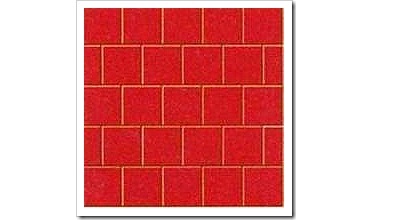
Plain rectangular tiles look better. It is worth considering that when facing the floor “in dressing”, laying is carried out only in horizontal rows, while it is not advisable to use tiles of different textures and colors, since the floor will look uneven.
Option # 3 - “diagonally”
Laying tiles “diagonally” is the most complex and time-consuming. This method allows you to create an interesting picture that optically expands a small room and allows you to level out minor irregularities in the walls.
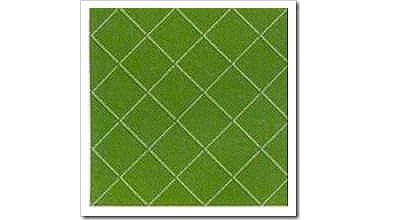
Seams are parallel lines that are located relative to the walls at an angle of 45 degrees.
Option # 4 - Chess
This method is characterized by the use of tiles of two contrasting colors. It is not necessary to use only black and white. Other options will do.
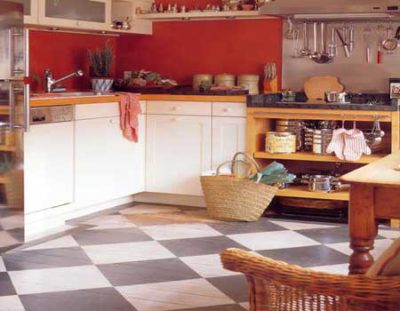
Option # 5 - “modular”
According to this technology, tiles of at least three sizes are used for cladding, which saves the surface from the monotonous alternation of identical segments. This styling option looks very unusual, and quite nontrivial, requires careful use of decorative elements, since it is already quite dynamic.
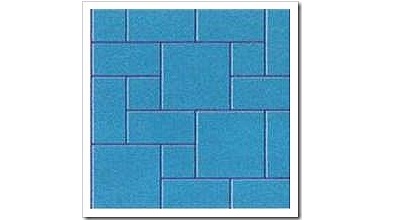
When choosing a modular tile, it is necessary to pay attention to the fact that the lengths of all its sides must be multiples of each other, the entire tile must be of the same texture and, preferably, from the same collection. You can immediately purchase the finished tile marked "modulare" on the packaging. Color can be both monophonic and contrasting, but excessive variegation must be avoided.
Option # 6 - “lines”
Using a tile of 2-3 colors, you can create a fairly simple and unpretentious pattern in the form of stripes that can be located from wall to wall, be continuous or intermittent, narrow or wide, straight or broken, intersecting or parallel. Tiles of a contrasting or close shade can be used as a border - the effect is very interesting. With a sufficiently high decorativeness and a variety of options, this method of laying tiles is simple and economical, as it gives a small amount of waste.
In custody
The issue of tile technology is very important. Even at the stage of designing a kitchen design, he needs to pay special attention. Tile should organically complement the interior: if your kitchen is sophisticated, it is better to choose a laconic tile and lay it in a simple way. If the furniture is modest, then the tile can become one of the most striking elements of interior decoration.At the same time, you can give scope for imagination and choose complex, intricate styling options.

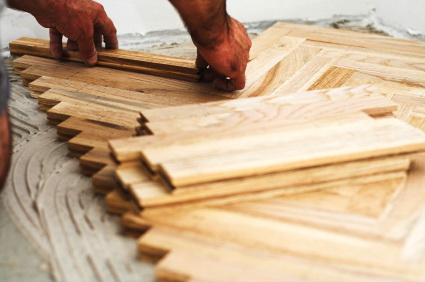
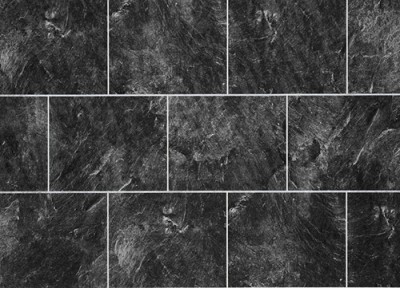

3 comments